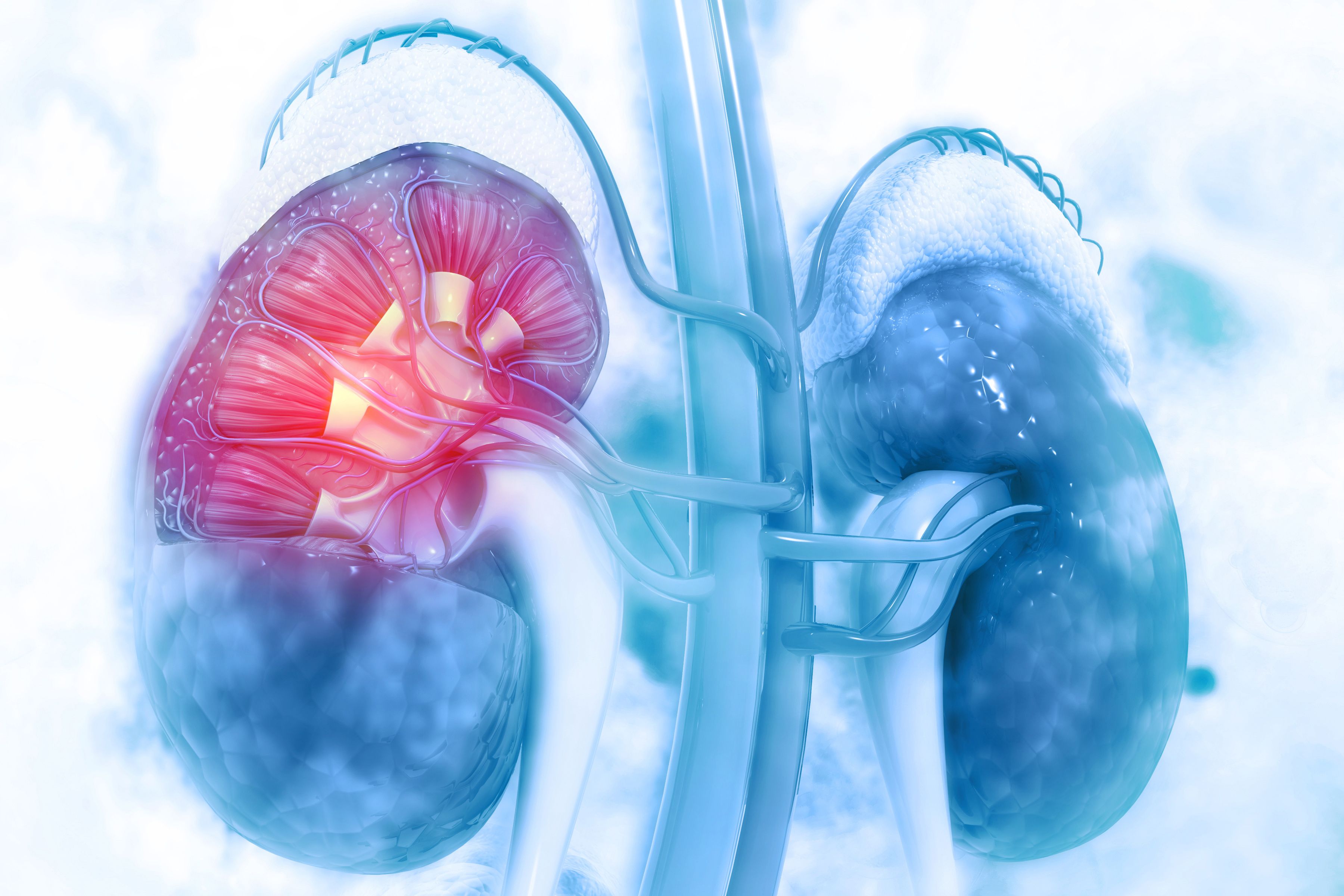Initial eGFR Dip Can Help Predict Proteinuria Reduction with SGLT2i in IgA Nephropathy
New study finds SGLT2 inhibitors reduce proteinuria in IgA nephropathy, with greater initial eGFR dips predicting stronger treatment responses.
Credit: Adobe Stock

The greater the initial dip in estimated glomerular filtration rate (eGFR), the greater the treatment response with SGLT2 inhibitors in IgA nephropathy, according to new data presented at the 61st European Renal Association Congress.
An analysis of real-world data from more than 60 patients with IgA nephropathy, results of the study suggest dapagliflozin (Farxiga) use was associated with reductions in proteinuria were found in all analysis subgroups including sex, baseline proteinuria, systolic blood pressure, and body mass index, with the greatest reactions observed among those with more significant dips in eGFR following treatment initiation.1
“The use of [SGLT2 inhibitors] was associated with a significant reduction of proteinuria in patients with IgA nephropathy in patients with maximally tolerated [RAASi]. Higher initial eGFR dip after treatment initiation was a predictor of a significantly higher reduction in proteinuria at the end of follow-up,” wrote investigators.1
The story of the SGLT2 inhibitor class’s rise from oral antihyperglycemic agent with modest effects on HbA1c to being the centerpiece in treatment algorithms for millions of patients across the globe has been historic. Now, with their benefit fully established and having received endorsement in the form of approval from the FDA, many have begun to hypothesize and examine a potential role for the class within glomerular disease beyond chronic kidney disease.1
Among these glomerular diseases for which nephrologists hypothesize SGLT2 inhibition could provide clinical benefit is IgA nephropathy. At the American Society of Nephrology 2023 Kidney Week, a prospective cohort study of patients with biopsy-proven IgA nephropathy administered dapagliflozin or canagliflozin at Peking University First Hospital found patients with IgA nephropathy experienced nearly 30% proteinuria reduction after 6 months of treatment with SGLT2 inhibitors.1,2
Led by Eleftheria Vardaki, MD, of the Nephrology Department Venizeleio Hospital in Greece, along with colleagues from other institutions in Greece, the current study was launched with tinned of furthering nephrology’s understanding of the effects of SGLT2 inhibition among patients with biopsy-confirmed IgA nephropathy. To do so, investigators designed their study as a single-arm trial and enrolled patients with biopsy-confirmed IgA nephropathy, an eGFR equal to or greater than 30 mL/min/1.73m2, and total urine protein of greater than 0.5 grams per day at screening.1
Per trial protocol, patients were started on dapagliflozin 10 mg once per day after baseline data were registered. The primary outcome of interest was the decline in eGFR and the reduction in 24-hour proteinuria from SGLT2i initiation to 1, 3, 6, 9, 12 months, end-stage renal disease, or kidney or cardiovascular death.1
Overall, 63 patients were enrolled. In total, 55 patients completed the entire 12-month follow-up period. Among this cohort, the mean age was 44.2 (SD, 18.3) years, 8 patients discontinued treatment due to adverse events attributed to dapagliflozin. At baseline, this cohort had an eGFR of 66.17 (SD, 19.7) ml/min/1.73 m2 and a 24-hour total urine protein of 2356 (SD, 1023) mg.1
Upon analysis, results provided evidence of a transient dip in eGFR from 66.17±19,7 min/1.73 m2 at baseline to 57 ml/min/1.73 m2, but investigators pointed out there was an improvement observed by month 3. Investigators noted the 24-hour urine protein difference with dapagliflozin was -25.1% (95% CI - 27.5, -23.2; P < .001) at 12 months. Additional analyses revealed proteinuria reductions were similar across all eGFRs and a significant correlation was found between the initial eGFR dip and percentage proteinuria reduction at the conclusion of the 12-month trial (R = –0.23; P = 003).1
“The correlation between eGFR dip and proteinuria reduction perhaps reflects the intraglomerular pressure reduction, mediated by tubuloglomerular feedback, one of the numerous,” investigators concluded.1
References:
- Xydakis D, Antonaki E , Tzali E, et al. RELATIONSHIP BETWEEN INITIAL eGFR DIP WITH PROTEINURIA AFTER SGLT2iTREATMENT, IN PATIENTS WITH IGA NEPHROPATHY. A REAL-WORLD CLINICAL STUDY. Abstract presented at 61st European Renal Association Congress. Stockholm, Sweden. May 23-26, 2024.
- Brooks A. SGLT2 inhibitors reduce proteinuria in patients with IgA nephropathy. HCPLive. May 23, 2024. Accessed May 23, 2024. https://www.hcplive.com/view/sglt2-inhibitors-reduce-proteinuria-in-patients-with-iga-nephropathy.